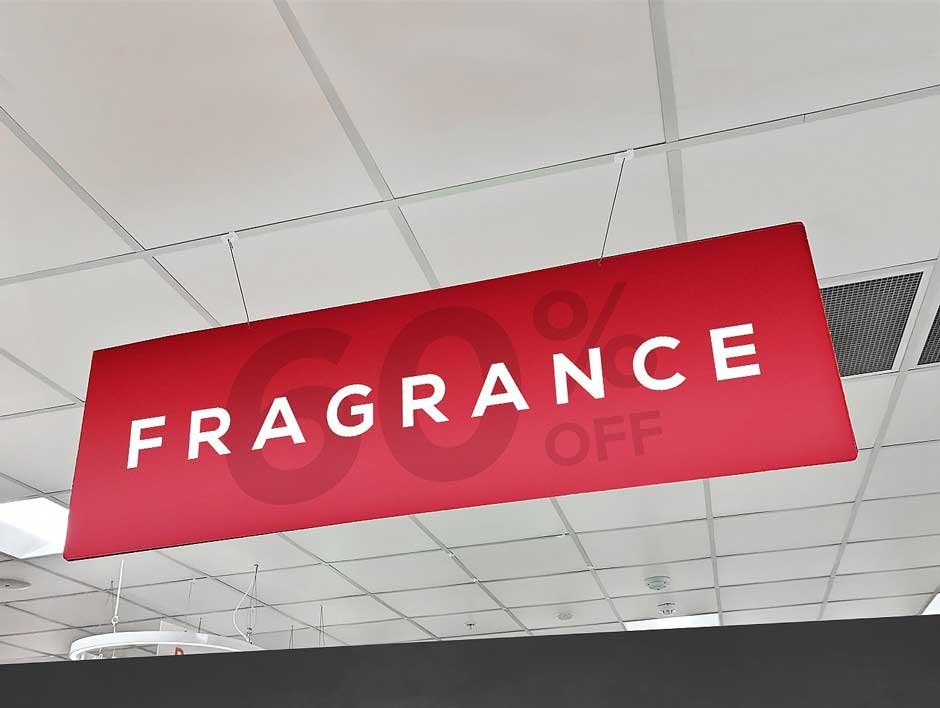Signage is one of the most powerful tools a business can use to attract attention, communicate messages, and shape customer experience. However, even the most eye-catching sign can lose its impact if it isn’t displayed correctly. Choosing the right sign hanging system is critical—not just for visibility but also for safety, durability, and aesthetic appeal.
Whether you’re outfitting a retail store, setting up trade show booths, or displaying information in an industrial setting, this guide walks you through everything you need to know about sign hanging systems—how to choose them, where to use them, and the options that best suit different environments.
Why Sign Hanging Systems Matter
A well-designed sign hanging solution can:
- Increase the visibility of signage
- Ensure safety and stability
- Enhance the aesthetics of the space
- Allow for easy installation and adjustments
- Withstand environmental challenges (e.g., wind, moisture)
Using an improper or low-quality hanging system can lead to drooping signs, damaged surfaces, and even dangerous falls, which may result in liability issues.
Key Factors to Consider When Choosing a Sign Hanging System
Before you dive into the options available, consider the following:
- Environment
Is the sign going indoors or outdoors? Will it be exposed to weather elements like wind, rain, or direct sunlight? Environments vary drastically—from air-conditioned retail stores to bustling construction sites—so your sign hanging solution must match the conditions.
- Weight of the Sign
Sign material and size impact weight. Heavier signs (like those made from metal, acrylic, or wood) will need reinforced hanging systems, whereas lightweight materials (like foam core or fabric) can be supported by basic cable or hook systems.
- Ceiling or Wall Structure
Your installation surface matters. Drop ceilings, open beams, drywall, and masonry all require different hardware. Knowing what you’re working with helps determine if you need clips, anchors, or suspension kits.
- Aesthetic Requirements
Do you want a sleek, modern appearance for a showroom? Or is a rugged, industrial look acceptable? The hardware’s visibility and style should align with your brand’s aesthetic.
- Flexibility and Adjustability
For spaces where signage needs to be changed regularly, like seasonal promotions in retail, modular and easy-to-adjust hanging systems are a must.
Types of Sign Hanging Systems
There’s no one-size-fits-all solution. Here are the most common types of sign hanging systems and where they shine:
- Cable Suspension Systems
These systems use stainless steel or nylon cables connected to ceiling or wall mounts. They’re ideal for:
- High ceilings
- Temporary exhibitions or trade shows
- Window displays
- Modern interior environments
Pros: Sleek look, adjustable height, supports various sign types
Cons: Not suitable for very heavy signage without additional reinforcement
- Grid Ceiling Clips and Hooks
These are specialized clips that attach to suspended ceiling grids, allowing signs to hang easily.
Best for:
- Retail environments
- Office buildings
- Classrooms
Pros: Affordable, tool-free installation, no damage to ceiling
Cons: Limited weight capacity, not for long-term outdoor use
- Banner Hanging Systems
These consist of top and bottom rails (usually aluminum or plastic) to hold banners taut. They are great for:
- Trade shows
- Retail promotions
- Lobbies or entrances
Pros: Keeps banners straight, easy to change graphics
Cons: Limited to fabric or vinyl signs, not ideal for irregular shapes
- Magnetic Sign Hanging Systems
These use strong magnets to adhere to metallic surfaces, making them easy to install and reposition.
Best for:
- Industrial settings
- Warehouses
- Short-term signage in metal-framed environments
Pros: Quick setup, no drilling or damage
Cons: Limited to metal surfaces, can lose grip with heavy signs
- Adhesive Hook and Tape Systems
These are lightweight, peel-and-stick solutions for temporary signs.
Ideal for:
- Temporary promotions
- Residential or light office use
Pros: Easy and clean installation
Cons: Limited strength, may not hold over time, can damage surfaces
- T-Bar and Beam Clamps
T-bar clips and beam clamps are robust solutions for hanging signs from structural elements in commercial buildings.
Best for:
- Factories
- Convention centers
- High-ceiling installations
Pros: Strong, stable, built for heavier signs
Cons: Requires tools, not aesthetically pleasing
Choosing the Right Sign Hanging System by Environment
Here’s a breakdown of the best sign hanging solutions depending on the environment you’re working in.
Retail Stores
- Ideal Systems:Cable suspension, ceiling grid clips, banner systems
- Why:Flexibility for frequent sign changes, appealing design aesthetics
- Pro Tip:Use adjustable cables to keep signage aligned and easy to update.
Corporate Offices
- Ideal Systems:Cable systems, banner hangers, adhesive hooks
- Why:Professional appearance with minimal ceiling damage
- Pro Tip:Use low-profile systems to maintain a clean, modern look.
Warehouses and Industrial Spaces
- Ideal Systems:Magnetic systems, beam clamps, heavy-duty hooks
- Why:Durability and support for heavier signs in large, open spaces
- Pro Tip:Use color-coded signs with magnetic systems for quick information changes.
Trade Shows and Exhibitions
- Ideal Systems:Banner hangers, portable cable systems, suction hooks (for glass)
- Why:Quick setup, portability, and brand aesthetics are key
- Pro Tip:Choose modular systems for easy transportation and setup.
Outdoor Events and Signage
- Ideal Systems:Reinforced cable systems, clamps, pole mounts
- Why:Must withstand wind, sun, and rain
- Pro Tip:Use weather-resistant materials and double-check weight ratings.
Tips for Installation and Maintenance
- Read Weight Limits
Always check the weight capacity of your chosen sign hanging hardware to prevent accidents or failures.
- Test Before Final Placement
Hang the sign at the intended location temporarily to test for visibility, alignment, and safety before securing it permanently.
- Use a Level
Uneven signage looks unprofessional and can affect readability. A bubble level or laser level is essential during installation.
- Inspect Regularly
Especially in high-traffic or outdoor areas, inspect your hanging systems routinely for wear, loosening, or corrosion.
- Keep Extra Hardware on Hand
Spare hooks, cables, and clips make replacements fast and painless in case of breakage.
Final Thoughts
The right sign hanging system is the unsung hero behind effective signage. It ensures your message is seen clearly, stays secure, and complements the surrounding environment. By considering factors like environment, weight, and aesthetics, and matching them with the appropriate hardware, you can create a signage strategy that’s both functional and visually appealing.
Whether you’re displaying promotional banners in a retail store, hanging directional signs in a warehouse, or outfitting a trade show booth, there’s a sign hanging solution tailored to your needs.
Explore your options, plan with care, and invest in quality, because how you hang your sign can be just as important as what it says.










